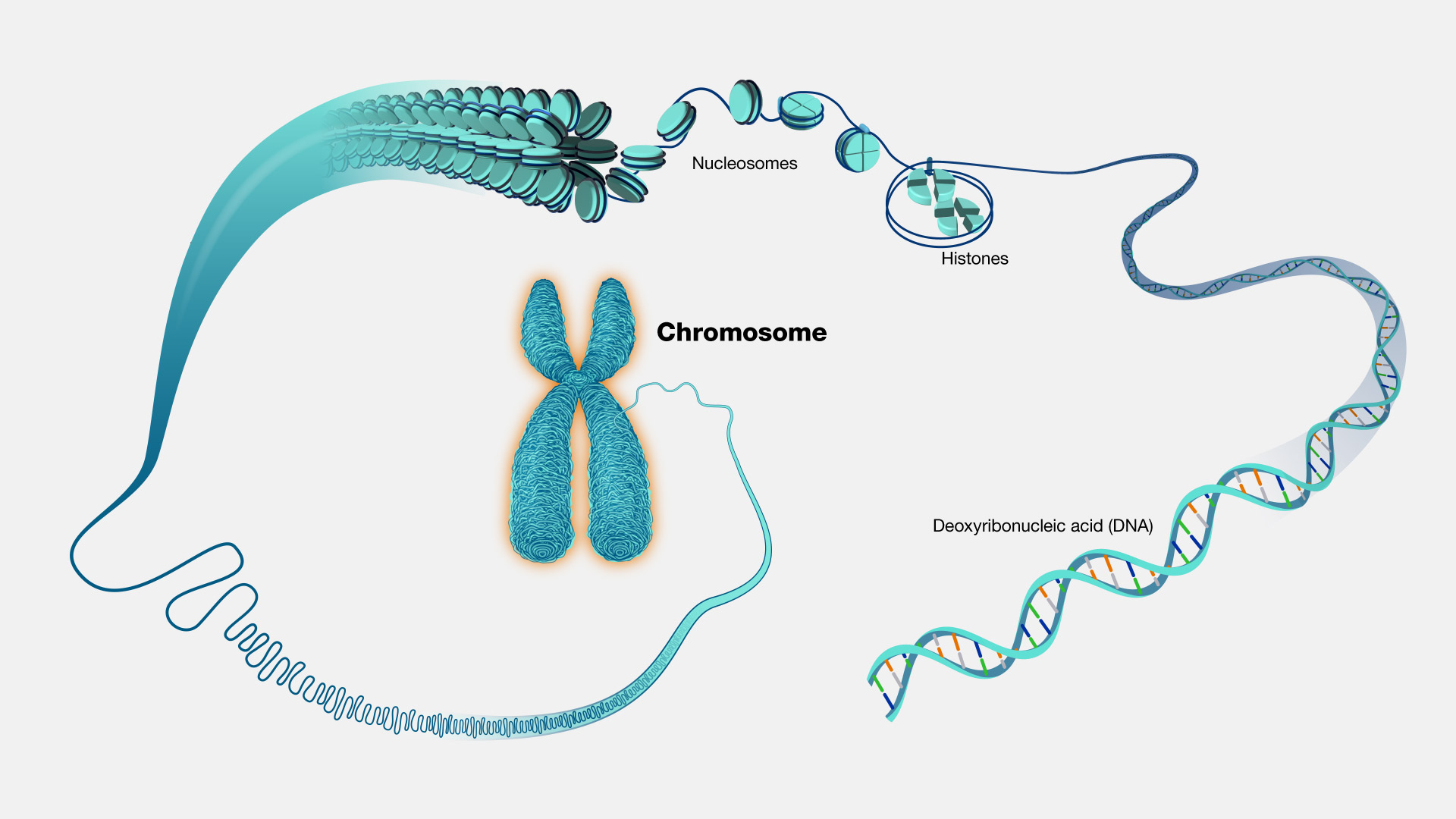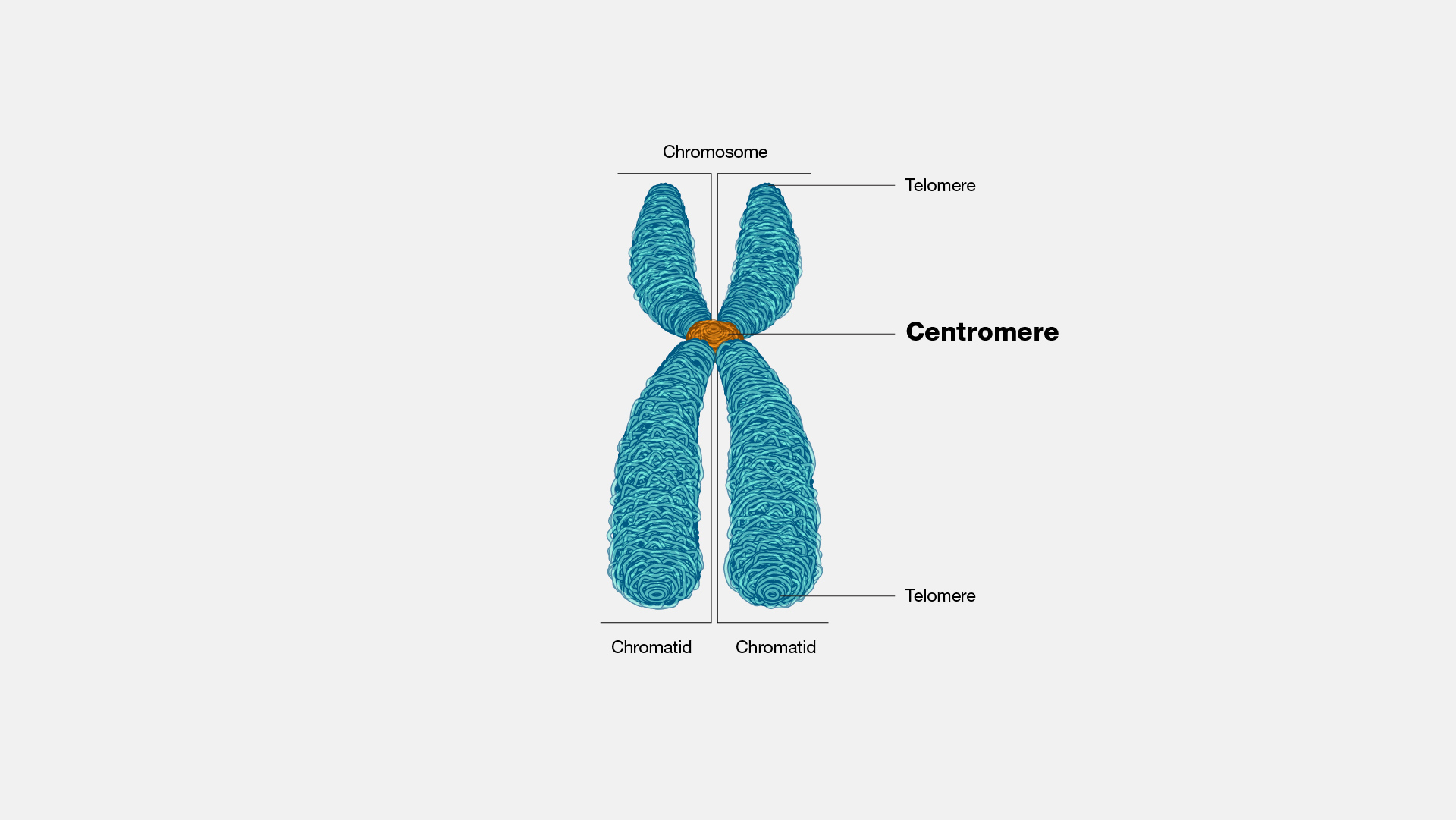1.2 Organization of the human genome#
The genome is divided into chromosomes#
One copy of the human genome consists of approximately 3 billion base pairs of DNA. DNA molecules are tightly packaged, along with proteins called histones, into chromosomes:
 Source: NIH Educational Resources
Source: NIH Educational Resources
The genome is divided into different contiguous fragments called chromosomes. There are 22 autosomes (1 through 22) and 2 possible sex chromosomes (X and Y). Not all chromosomes are created equally! Chromosome 1 is the largest, whereas chromosome 21 is the shortest. Chromosome 19 has the highest density of genes.
There are special regions at the ends and middle of each chromosome. The ends consist largely of repetitive sequences making up regions called telomeres. For humans, the telomere sequence consists of repeats of “TTAGGG”. The middles of chromosomes are called centromeres. In humans, centromeres consist large of repeats called alpha satellites, with repeat units of 171 base pairs.
 Source: NIH Educational Resources
Source: NIH Educational Resources
Humans have two copies of the genome#
Humans are diploid, meaning most of our cells consist of two entire copies of the genome each of which are double-stranded, as we discussed in the last section. Note, germ cells, i.e. egg and sperm, contain only one copy. More on that later). Our diploid cells contain 2 copies of each autosome (1 copy inherited from each parent), and 2 sex chromosomes (again, one inherited from each parent) for a total of 46 chromosomes. Individuals with two copies of chromosome X are typically female. Individuals with one copy of X and one copy of Y are typically male.
In some cases, individuals may inherit too many or too few copies of a particular chromosome, which can lead to certain genetic conditions. For example, individuals with three copies of chromosome 21 (referred to as trisomy 21) are affected by Down syndrome. Individuals with two copies of chromosome X and one copy of chromosome Y are affected by Klinefelter syndrome.
Mitochondria#
In addition to the 46 chromosome copies, our cells also have mitochondria, which actually has its own genome! The mitochdondrial genome is around 16.5kb and consists of a circular DNA molecule. Each cell in your body may contain many (thousands) of mitochondria, and thus will have many copies of the mitochondrial genome. Mitchondrial genomes are typically maternally inherited, meaning your mitchondrial genome will be identical to your mom’s, with no contribution from your dad (but there may be exceptions).
We will mostly ignore the mitochondrial genome in this course, but it will come up again when we talk about genetic genealogy. Mutations in the mitochondrial genome can also result in a wide range of disorders.
